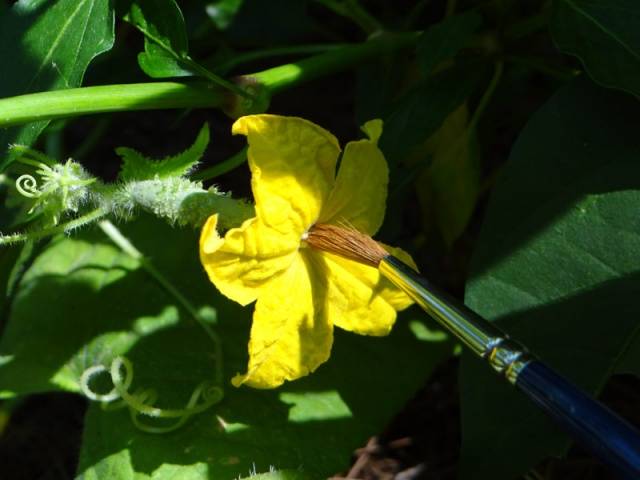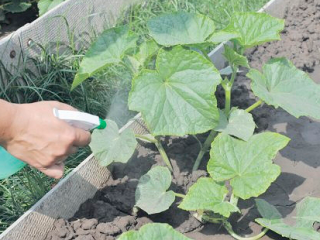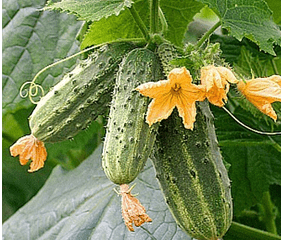Content
Do you know how to pollinate cucumbers in the greenhouse? The whole problem is that insects have limited access to an enclosed space. The yield is especially severe for varieties with heterosexual flowers.
How can the problem of pollination be solved?
Pollination of cucumbers in a greenhouse can be carried out in two ways - with the help of natural and artificial insemination.
It is not always possible to use the labor of insects in a confined space, however, it is quite possible to shift most of the work on moving pollen onto them. At least for most of the summer, pollinators can be brought into the greenhouse using a ventilation system.
Artificial pollination is necessary in the following cases:
- during a period of reduced insect activity;
- for breeding activities requiring the exclusion of accidental fertilization;
- the inability to provide access for pollinators to the greenhouse.
The best option is natural pollination, the usual is a mixed option.
How to ensure natural pollination
The best way to entrust pollination to insects is to have a bee hive. This, of course, is additional trouble, but you will be with cucumbers and honey. Many serious gardeners do just that. With proper care, bees fly very early. In central Russia, they can fly out during the flowering of willows and primroses, that is, in April. So pollination is not a problem in this case, the main thing is to put the hive in the right place on time.
If you don't want to mess with the hives, there are several ways to use the environment to your advantage.
The more diverse the environment of the site where the greenhouse is located, the more pollinators there will be. Where there is a lot of decaying organic matter, pesticides are not used, and the earth is not dug up, not only bumblebees and wild bees can settle for permanent residence, but also a lot of all kinds of flies and bugs that feed on nectar and pollen, which makes them fly from flower to flower.
Some gardeners resort to forming sweet baits. If you spray the plants with a sugar solution (for 1 liter of water 2 tablespoons), then this will attract many nectar lovers. However, they will be tempted to collect the sweetness from the leaves and not from the flowers. However, this method has one peculiarity. Bees have a good collective memory. They will remember the place where they were well treated and will fly here regularly.
The areas where the earth is dug up can serve as a source of the appearance of various butterflies. However, they are not able to provide full pollination of a large number of cultivated plants. In addition, most of the larvae of these butterflies feed on the same plants.
It is best to put a nest of bumblebees or wild earth bees in your greenhouse. However, this requires knowledge of their biology, patience and transferring part of the greenhouse space to an uncultivated category.
The heterogeneous environment on the site is always beneficial to the farmer. It supplies not only pollinators, but many small predators that inhibit the reproduction of herbivorous organisms.
Artificial pollination
If you decide to replace a bee with yourself, then you can do this as follows:
- Find a male flower, pick it carefully, bring it to the female one and shake off the pollen on the pistil. In this case, it is necessary to ensure that pollination actually occurs. A bee, due to its size, transfers pollen carefully and economically, but a large person will very quickly lose all the pollen.Equip yourself with a magnifying glass and periodically look at the male flower. If the pollen has already flown around, pick a new one.
- The entire pollen transfer procedure can be done with a soft art brush. Collect the pollen with a few waving movements, then place the brush in a porcelain, plastic or glass small container to prevent unnecessary loss of material. Many more female flowers can be pollinated with such a brush than with one plucked male.
- Particularly valuable varietal plants, the genetic purity of which is of great concern to you, must be protected from any accidental pollination from specimens belonging to other species. It is necessary to insulate varietal flowers even before they bloom, immediately after it becomes clear to which gender this species belongs. Wrap the desired flower in gauze, opening it only during pollination or after the ovary has begun to form. In this case, artificial pollination is best done with a plucked flower. This procedure is used if they want to grow seed.
Artificial pollination is not a very difficult process, albeit troublesome.
However, it also has its own subtleties. They are as follows:
- It is recommended to spend it in the morning, before the sun begins to dry out the air. In cloudy weather, pollination is allowed at a later time.
- It is important to choose a period with an air humidity of about 70%. If the air is more humid, then the pollen clots in lumps; if it is too dry, it may not germinate in the pistil.
- In order to preserve the genetic integrity of the varietal affiliation of this bush, it is necessary, first of all, to supply it with a label.
- Manual pollination is carried out one day after the flower has completely bloomed. The result of your efforts can be seen already in 3 days. In a fertilized flower, the ovary will begin to grow rapidly.
- Remember to tag flowers that have already been pollinated. Otherwise, you will spend too much time and money on the role of a bee. You can use, for example, markings made with watercolor paint or gouache. You can do it easier - to tear off the petal from the pollinated flower.
Thus, if you are interested in harvesting, pollination of cucumbers in greenhouses should be mandatory. Once it gets into the habit, it won't seem so difficult.












